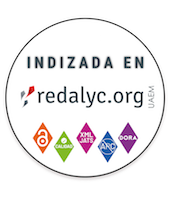Linguistic and semantic complexity in problem posing by students, pre-service and service teachers in high school
DOI:
https://doi.org/10.33010/ie_rie_rediech.v12i0.1201Keywords:
problem posing, complexity of mathematical problemsAbstract
In this research we present an analysis about the linguistic and mathematical complexity of problem posing by 34 participants (10 high school students, 15 high school math pre-service teachers and 9 high school math service teachers) when facing a task of invention of a history-type arithmetic problem. Its syntactic linguistic complexity was analyzed using assignment, relational and conditional propositions, and its mathematical complexity through its underlying semantic structural relationships. We found that the invention of problems with high semantic and syntactic complexity is scarce, mainly in service teachers, who present a more organized scheme of problems, in contrast to pre-service teachers who propose a greater number of problems with a higher level of complexity but presenting a series of poorly organized problems. In the case of students, up to 75% of their proposals are of the least complexity, both syntactic and semantic. The similarity between the types of problems proposed by the three groups studied is highlighted. We also discussed about the advantages of proposing activities for the invention of problems in the upper-middle and upper-level classroom, mainly in teachers training.
References
Akay, H., y Boz, N. (2010). The effect of problem posing oriented analyses-II course on the attitudes toward mathematics and mathematics self-efficacy of elementary prospective mathematics teachers. Australian Journal of Teacher Education, 35(1), 59-75. https://doi.org/10.14221/ajte.2010v35n1.6.
Ayllón, F., y Gómez, I. (2014). La invención de problemas como tarea escolar. Escuela Abierta, (17), 29-40.
Cai, J., Chen, T., Li, X., Xu, R., Zhang, S., Hu, Y., Zhang, L., y Song, N. (2019). Exploring the impact of a problem-posing workshop on elementary school mathematics teachers’ conceptions on problem posing and lesson design. International Journal of Educational Research, 102, doi: 10.1016/j.ijer.2019.02.004.
Cai, J., & Hwang, S. (2019). Learning to teach through mathematical problem posing: Theoretical considerations, methodology, and directions for future research. International Journal of Educational Research, 102. https://doi.org/10.1016/j.ijer.2019.01.001.
Clements, M. A. (1999). Planteamiento y resolución de problemas: ¿Es relevante Polya para las matemáticas escolares del siglo XXI? Suma: Revista sobre Enseñanza y Aprendizaje de las Matemáticas, (30), 27-36.
Crespo, S. (2003). Learning to pose mathematical problems: Exploring changes in preservice teachers’ practices. Educational Studies in Mathematics, 52(3), 243-270.
Crespo, S., y Sinclair, N. (2008). What makes a problem mathematically interesting? Inviting prospective teachers to pose better problems. Journal of Mathematics Teacher Education, 11(5), 395-415. https://doi.org/10.1007/s10857-008-9081-0.
Ellerton, N. F. (1986). Children’s made-up mathematics problems: A new perspective on talented mathematicians. Educational Studies in Mathematics, (17), 261-271. http://dx.doi.org/10.1007/BF00305073.
Gonzales, N. A. (1994). Problem posing: A neglected component in mathematics courses for prospective elementary and middle school teachers. School Science and Mathematics, 94(2), 78-84.
Koichu, B. (2019). Problem posing in the context of teaching for advanced problem solving. International Journal of Educational Research, 102(3). https://doi.org/10.1016/j.ijer.2019.05.001.
Koichu, B., y Kontorovich, I. (2013). Dissecting success stories on mathematical problem posing: A case of the Billiard Task. Educational Studies in Mathematics, 83(1), 71-86. https://doi.org/10.1007/s10649-012-9431-9.
Olson, J. C., y Knott, L. (2013). When a problem is more than a teacher’s question. Educational Studies in Mathematics, (83), 27-36. https://doi.org/10.1007/s10649-012-9444-4.
Rodríguez, L., García, L., y Lozano, M. (2015). El método de proyecto para la formulación de problemas matemáticos. Atenas, 4(32), 100-112.
Silver, E. A. (1994). On mathematical problem posing. For the Learning of Mathematics, 14(1), 19-28.
Silver, E. A., y Cai, J. (1996). An analysis of arithmetic problem posing by middle school students. Journal for Research in Mathematics Education, 27(5), 521-539. https://doi.org/10.2307/749846.
Silver, E. A., y Cai, J. (2005). Assessing students’ mathematical problem posing. Teaching Children Mathematics, 12(3), 129-135.
Xu, B., Cai, J., Liu, Q., y Hwang, S. (2020). Teachers’ predictions of students’ mathematical thinking related to problem posing. International Journal of Educational Research, (112). doi: 10.1016/j.ijer.2019.04.005.
Published
How to Cite
Issue
Section
License
Copyright (c) 2021 Yuridia Arellano García, Lucero Hernández Cruz, Antonia Hernández Moreno

This work is licensed under a Creative Commons Attribution-NonCommercial 4.0 International License.




















